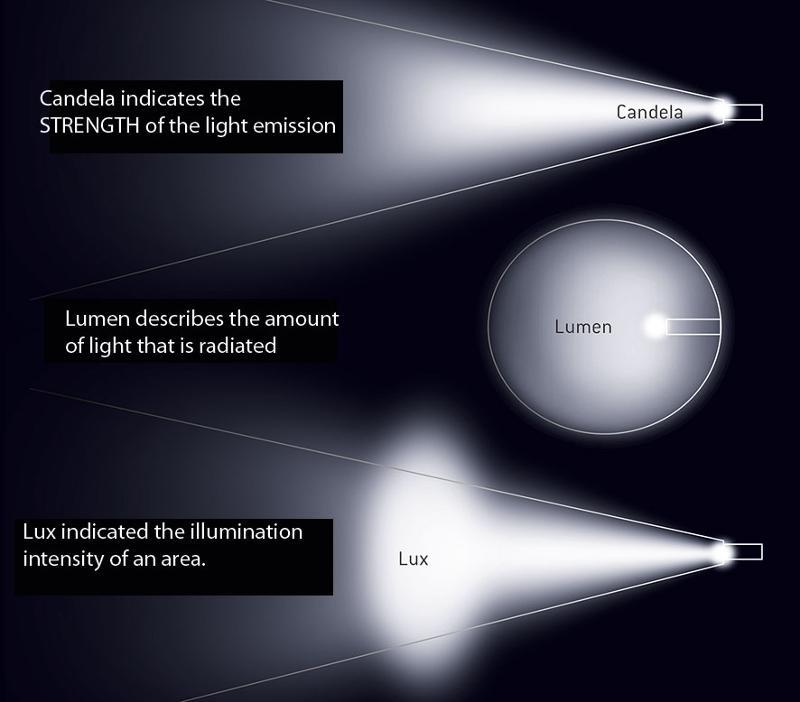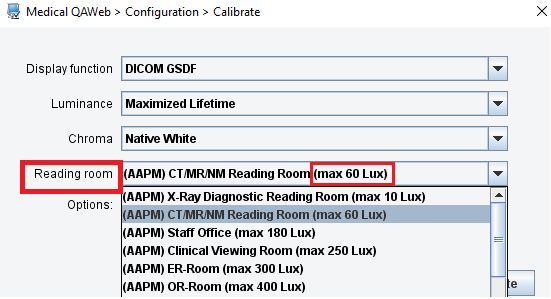This article will list up the different light quantities, their correct unit and briefly explain their meanings.

Q: Hey Barco, I was wondering what the difference is between Lumens, Lux, Candela.
Instead of using the actual definition of these different units to measure light, we propose to do this by means of an example:
Imagine that you are in your shower. When you open the tap, the showerhead diffuses droplets of water. Imagine that the water droplets are the light photons in our definitions. Darkness is when your shower does not spit a drop; light is when the water flows.
Lumens (lm)
You agree that there may be more or less water out of this shower head. For example, a few drops that will just get you wet, or liters and liters and you'll be soaked in two seconds.
Let's give this total amount, the unit "lumens".
The lumens, therefore, represents the amount of water coming out of the tap. If I open the tap halfway, I will have 50 lumens. If I open it completely I will have 100 lumens.
As a unit of light, Lumens = The quantity of light that is emitted from the source (officially called "light flux").
Candela (cd)
You may have a shower head with several settings which allow you to switch from one extreme to another. And yet, you always have the same amount of water coming out: In one case, all the water goes in the same direction in a powerful jet; in the other case, you have a cloud of droplets without precise direction.
And that's where we'll talk about candelas.
As a unit of light, Candela = Strength of the light emission in a given direction (officially called "light intensity").
Lux (lx)
There is another aspect that has not been addressed. If you approach your mouth to the shower head, you can absorb all the water. If, on the other hand, you move away from it, there is only getting little water going into your mouth, the majority of the jet flows around you.
Well, we will call "lux" this amount of water received, which in fact depends on other factors: how much water your shower delivers, what is the shape of the jet and how far away you are.
As a unit of light, Lux = Quantity of light on a certain surface in the room (officially called "illuminance" on that surface)
And now you are ready for the definitions:
1) Candela (cd) is a measurement that describes the luminous intensity of the emitted light.
- Example: Laser pointers have the highest candela rating since the majority of their light is focused in a single direction.
2) Lumen (lm) is a measurement of the total amount of visible light
- Example: To put it simply, the lumen rating is how much total visible light is produced by a light source (a candle, a light bulb...)
3) Lux (lx) is a measure of the illumination intensity of a surface. It means that the Lux value indicates the amount of light which is present in an area or a surface (e.g: the amount of light in a Diagnostic Imaging Reading Room is referenced in Lux)
- Example of reading room selection in QAWeb Agent (Barco's Quality Assurance Software Program)

Q: Okay... but why is the lighting reference of the Barco monitors expressed in cd/m2
Because in the video industry, the brightness of a display is characterized in a luminance which is expressed in the unit cd/m2. It indicates how much luminous power will be detected by an eye looking at a light emitting surface from a particular angle or point of view. In this case, the solid angle of interest is the solid angle subtended by the eye's pupil. Luminance is thus an indicator of how bright the surface will appear.
P.S.: For each Barco diagnostic imaging monitor, the calibrated brightness is always expressed in cd/m2 (see the product's technical specification documents).
Conclusion:
In short:
- Lumens: How much light is given off by the light source?
- Lux: Quantity of light on a surface/ in an area
- Candela: How intense the light goes towards a direction
- Luminance: Amount of luminance power detected by the human eyes



